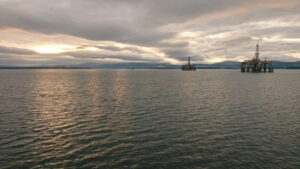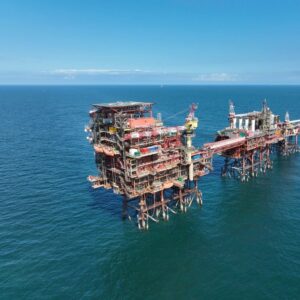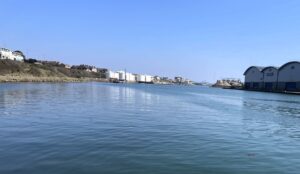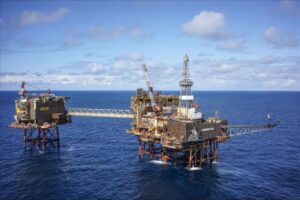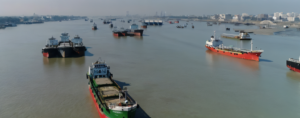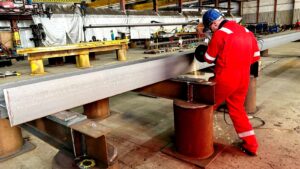UK port set for revival with plans to recycle old rigs into foundations for floating wind farms
UK’s Ardersier Port, which was one of the largest oil rig fabrication yards in the world employing up to 4500 workers, is now set to be transformed into Europe’s first fully circular energy transition facility where old oil rigs will be recycled to make foundations for floating offshore wind farms in a move expected to generate thousands of jobs.

The unused Ardersier Port located 14 miles east of Inverness stretches at over 400 acres and, with more than a kilometre of quayside, it is the largest brownfield port in the UK. It is now being transformed into an energy transition facility by its new owners as the work on a £20 million, nine-month ‘capital dredge’ is about to begin, expected to remove 2.5 million cubic metres of sand.
The port is owned by Steve Regan, a former chief executive of civil engineering firm Careys, and business partner Tony O’Sullivan, who purchased the site earlier this year but the acquisition fee was not disclosed. They set up Ardersier Port in May and registered the business in Fraserburgh.
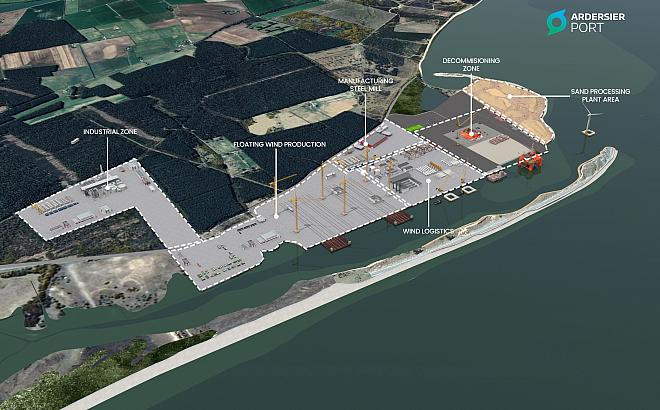
Over the next five years, the port’s owners will deliver an oil rig decommissioning facility and a waste from energy recovery facility. They will also deliver a £300 million green steel plant, powered by offshore wind and energy from waste, a concrete production plant utilising dredged sand from the port and by-products from the steel plant and energy from waste facility, as well as a dedicated floating wind hub for concrete floating wind foundation manufacturing.
This, according to owners, will create the largest floating wind foundation fabrication, manufacturing and assembly facility in the UK – in an offshore wind market predicted to deliver 29,000 jobs and £43.6 billion to the UK economy by 2050.
Ardersier Port already has an agreement with floating wind player BW Ideol, guaranteeing it exclusive access to the port for the manufacture of concrete floating wind foundations.
Related Article
-
BW Ideol, Ardersier Port ink partnership agreement, dredging included
Business Developments & Projects
Once the dredging is complete next summer, Ardersier Port will build a bespoke slipway that will allow floating oil and gas structures to be hauled onshore prior to removing all contaminants and decommissioning them.
Last week, a report by industry body Oil and Gas UK estimated there will be more than a million tonnes of North Sea topsides coming ashore this decade, much of which can be recycled.
Regan said: “At Ardersier, we can lead the UK’s Green Industrial Revolution by using circular economy practices to deliver new low carbon infrastructure built on the by-products of our oil and gas past. This is a once in a generation opportunity to create a world-leading industrial and offshore wind manufacturing facility here in the UK.”
O’Sullivan said: “The energy transition from offshore structures to floating wind has an important missing factor: steel. Today, the UK exports ten million tonnes of scrap steel annually. By building a new renewable-powered electric arc furnace at Ardersier Port, the first new-build steel mill in the UK for 50 years, we will utilise a million tonnes of scrap each year. This will produce reinforcement steel for the UK construction industry, of which there is currently a shortfall, allow for the onsite construction of floating wind platforms, and enable us to export green steel to global markets.”
He further added: “This strategic approach has been backed by a recent independent report by Zero Waste Scotland and once complete, our green steel mill will be revolutionary: it will be the only place in the world where the scrap from decommissioning is processed into steel. Once operational, this plant alone will generate 300 high quality permanent low carbon jobs.”
Worth mentioning here is that BW Ideol is one of three partners in the Floating Energy Allyance, which has pledged to manufacture all its floating concrete foundations in Scotland.
BW Ideol’s CEO, Paul de la Gueriviere, said: “The lack of large infrastructure is a bottleneck to deliver the number of floating foundations required for the UK market’s ambitious development plans, both in terms of local content and the production rate expected. Ardersier Port is a unique facility to unlock these constraints.”
The plans at Ardersier have been welcomed by OGUK, the industry body which represents the UK’s offshore oil and gas industry and whose members also include Ardersier Port.
Joe Leask, OGUK’s Decommissioning Manager, stated: “The North Sea Transition Deal our industry has signed with the government commits us to help the nation cut its emissions. That will include building thousands more wind turbines, plus facilities for capturing CO2 and producing hydrogen from natural gas – all requiring new offshore infrastructure.
“At the same time, we are decommissioning many ageing oil and gas industry assets from which we will recover more than 100,000 tonnes a year of steel. Projects like Ardersier will help create a circular economy where, instead of generating waste, these old structures become the foundation for the nation’s energy future.”
Earlier this month, the UK government announced up to £160 million in new funding to kickstart the rollout of large-scale floating offshore wind ports and factories across the country and it is expected Ardersier Port will bid for these funds.


